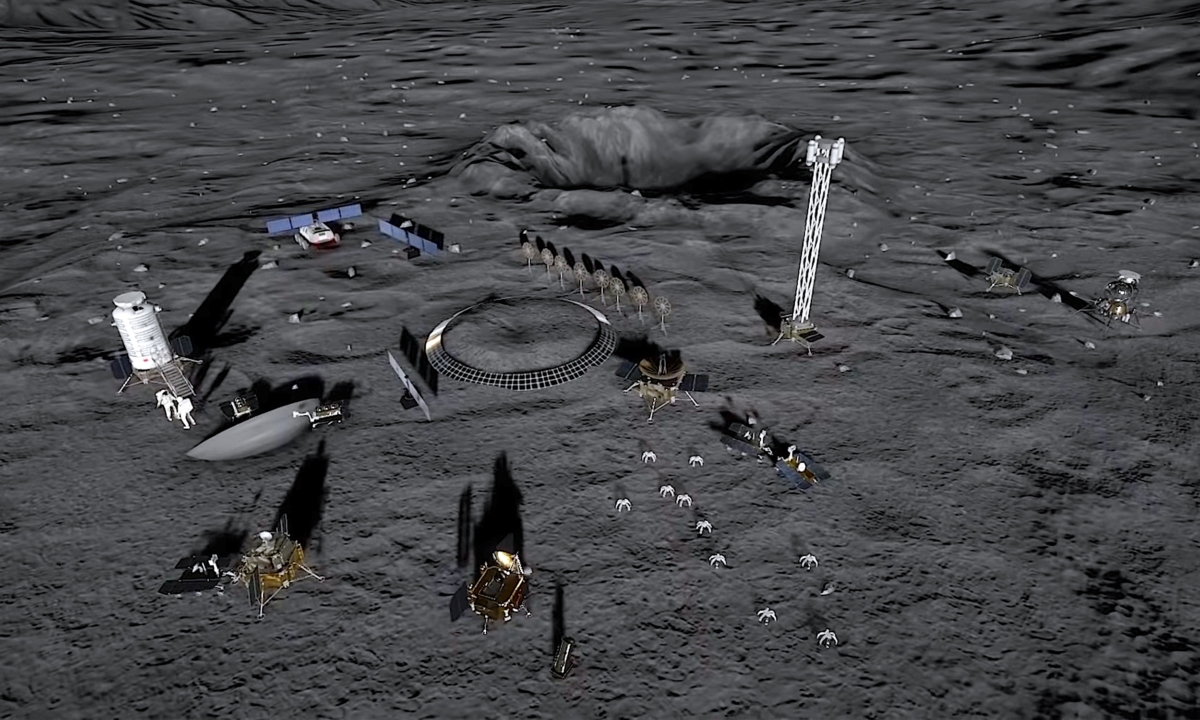
Update, 11:28 a.m. EDT Saturday, Sept. 3: The Artemis 1 mission has been scrubbed due to a fuel leak. The next possible opportunity is Monday (Sept. 5).
The United States isn't the only nation working to get humanity back to the moon.
NASA is gearing up for a Saturday (Sept. 3) launch of Artemis 1, the highly anticipated first mission of its Artemis program of crewed lunar exploration. Liftoff is scheduled to occur during a two-hour window that opens at 2:17 p.m. EDT (1817 GMT); you can watch it live here at Space.com when the time comes, courtesy of NASA.
Artemis 1 will use a Space Launch System (SLS) megarocket to send an uncrewed Orion capsule to lunar orbit and back. The five-week-long mission aims to vet some of the key hardware that NASA will use to put boots on the moon in 2025 or 2026 and to set up a lunar base toward the end of the decade, if all goes according to plan.
Related: NASA's Artemis 1 moon mission: Live updates
More: NASA's Artemis 1 moon mission explained in photos
The United States isn't going back to the moon alone. NASA leads Artemis, but the program has brought in a number of international partners, including the space agencies of Japan, Canada and Europe. Two other space powers, China and Russia, aren't part of the consortium, but they have crewed moon plans of their own.
China and Russia announced in March 2021 that they're teaming up on an ambitious project called the International Lunar Research Station (ILRS), which, like Artemis, aims to set up a base near the moon's south pole.
Get the Space.com Newsletter
Breaking space news, the latest updates on rocket launches, skywatching events and more!
Indeed, the two projects appear to be targeting the same general patches of lunar real estate — highland regions that offer easy access to lots of sunlight as well as the water ice that's thought to be abundant on the shadowed floors of polar craters.
There are three main phases of the ILRS effort, Chinese space officials have explained: reconnaissance, construction and utilization. The first phase is already underway, analyzing data gathered by China's robotic Chang'e 4 mission, which touched down on the moon's far side in January 2019.
The reconnaissance phase will continue over the next few years with the work of additional, yet-to-launch robotic missions such as Chang'e 6, Chang'e 7 and Russia's Luna 25, Luna 26 and Luna 27 probes. The roughly decade-long construction stage will begin in 2026, featuring more robotic missions by China, Russia and (potentially) international partners. If all goes according to plan, ILRS will be ready to host crewed missions by 2036 or thereabouts.
To be clear: This is a proposed timeline, not a firm commitment. The Chinese government has not yet officially put a crewed moon landing on its docket. And things have changed considerably since the ILRS plans were unveiled last year, thanks to Russia's ongoing invasion of Ukraine. Waging war is expensive, and Russia may end up siphoning resources away from its civil space program to continue doing so. (Many of Russia's space partnerships have splintered in the invasion's wake, but it's still aboard the ILRS, as far as we know.)
There's uncertainty associated with Artemis, too, of course. For example, SpaceX's next-gen Starship vehicle, which will serve as the program's first crewed lunar lander, has to get fully up and running in the next few years. (SpaceX is currently gearing up for the first-ever Starship orbital test flight, which could happen in the next few months.) Gateway must take shape in lunar orbit. And the SLS and Orion must work as planned.
So keep your fingers crossed for a successful launch on Saturday, and for Artemis 1 to hit all of its marks over the ensuing five weeks. If the mission fails, the next steps for the Artemis program become scarily fuzzy.
Mike Wall is the author of "Out There" (Grand Central Publishing, 2018; illustrated by Karl Tate), a book about the search for alien life. Follow him on Twitter @michaeldwall. Follow us on Twitter @Spacedotcom or on Facebook.
Join our Space Forums to keep talking space on the latest missions, night sky and more! And if you have a news tip, correction or comment, let us know at: community@space.com.

Michael Wall is a Senior Space Writer with Space.com and joined the team in 2010. He primarily covers exoplanets, spaceflight and military space, but has been known to dabble in the space art beat. His book about the search for alien life, "Out There," was published on Nov. 13, 2018. Before becoming a science writer, Michael worked as a herpetologist and wildlife biologist. He has a Ph.D. in evolutionary biology from the University of Sydney, Australia, a bachelor's degree from the University of Arizona, and a graduate certificate in science writing from the University of California, Santa Cruz. To find out what his latest project is, you can follow Michael on Twitter.









